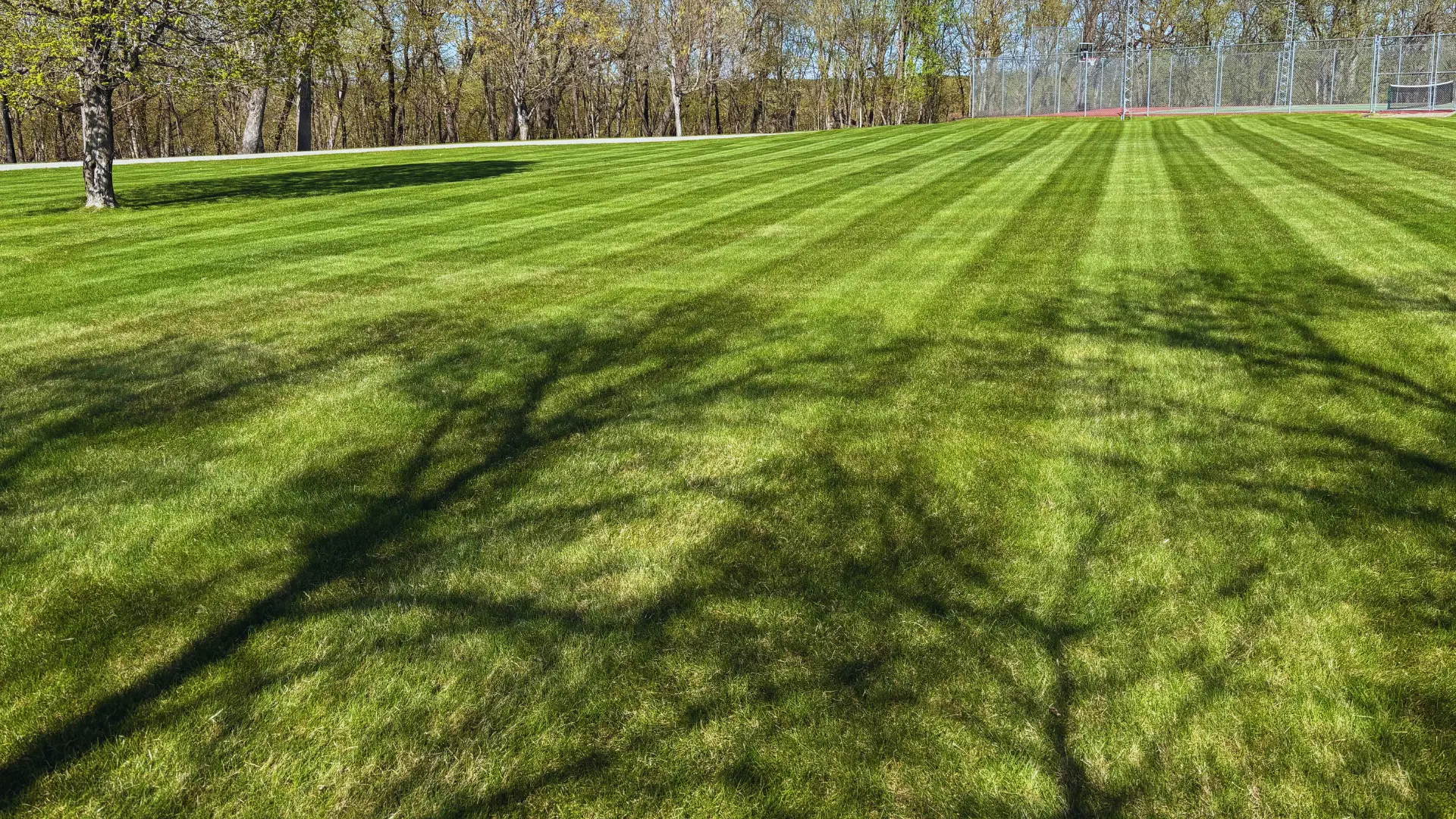At Miller Yard Care, we're here to help you understand what snow mold is, why it happens, and most importantly, how to prevent it, drawing on the expert insights from leading universities in our region like the University of Minnesota, University of Wisconsin, University of Iowa, and North Dakota State University.
What Exactly is Snow Mold?
Snow mold isn't a single culprit, but rather a general term for several types of fungi that thrive in cool, moist conditions, particularly under a blanket of snow. The two most common types we encounter in our climate are:
-
Gray Snow Mold (Typhula blight): This typically appears as circular patches of bleached or straw-colored turf, often matted down. You might see a grayish-white fungal growth (mycelium) at the edges of the patches, and in some cases, tiny, hard, reddish-brown or black survival structures called sclerotia. Gray snow mold usually only damages the grass blades, meaning the plant crown is often still healthy and can recover.
-
Pink Snow Mold (Microdochium patch): As the name suggests, this type can have a pinkish tint, especially at the edges of the affected areas. Unlike gray snow mold, pink snow mold can damage the grass crowns, potentially leading to more significant turf loss. It can also develop without snow cover, thriving in cool, wet conditions.
Both types flourish when snow falls on unfrozen ground, creating an insulated, humid environment perfect for fungal growth. Prolonged snow cover (especially over 60 days) and poorly drained areas significantly increase the risk.
Why Does My Lawn Get Snow Mold?
Several factors contribute to snow mold development:
-
Extended Snow Cover: This is the primary driver. When snow stays on the lawn for a long time, it creates a consistently cool, dark, and humid environment that is ideal for the fungi to grow.
-
Unfrozen Ground: If the ground doesn't freeze before the first snowfall, the fungi can start to establish themselves in the turf.
-
Tall Grass Going Into Winter: Longer grass blades are more likely to mat down under snow, trapping moisture and creating the perfect breeding ground for mold.
-
Excessive Thatch: A thick layer of thatch (dead grass, stems, and roots) on your lawn acts like a sponge, holding moisture and preventing air circulation, which snow mold loves.
-
Late Fall Nitrogen Fertilization: Applying high-nitrogen fertilizers too late in the fall can promote lush, succulent growth that is more susceptible to disease and can mat down easily
-
Poor Drainage and Compaction: Areas where water tends to pool or where the soil is heavily compacted will remain wet longer, creating favorable conditions for snow mold.
-
Large Snow Piles: Piling snow from shoveling or snow blowing in one spot creates a prolonged, insulated area, making those spots highly susceptible.
What Can I Do About Snow Mold?
The good news is that in most cases, especially with gray snow mold, the damage is primarily cosmetic, affecting only the grass blades, and your lawn will usually recover on its own as temperatures rise and the lawn dries out.
In the Spring, for existing snow mold:
-
Gentle Raking: Once the lawn has dried out, gently rake the affected areas to break up the matted grass and allow for better air circulation. Be careful not to rake too aggressively, as this can pull out healthy grass (University of Minnesota Extension).
-
Promote Drying: If possible, spread out large snow piles to encourage faster melting and drying of the turf beneath.
-
Wait and See: Often, with warmer temperatures and regular spring growth, the affected areas will green up and recover naturally.
-
Overseeding (If Necessary): If some patches don't recover, you may need to overseed those areas once the soil temperatures are appropriate for germination.
Preventing Snow Mold in the Fall (Your Best Defense!):
Prevention is always better than cure when it comes to snow mold. Here's how you can prepare your lawn in the fall:
-
Continue Mowing Until Dormancy: Keep mowing your lawn until the grass stops growing, typically when temperatures consistently fall below freezing. Aim for a final mowing height of about 2.25 to 2.5 inches. This prevents tall grass from matting down under the snow.
-
Avoid Late Nitrogen Fertilization: Do not apply excessive nitrogen fertilizer in late fall. If you fertilize in the fall, use a slow-release formula or a "winterizer" that is higher in potassium, which strengthens roots without promoting lush top growth susceptible to disease
-
Remove Leaves and Debris: Rake and remove all fallen leaves and other organic debris from your lawn before the first snowfall. Leaves trap moisture and create an ideal environment for mold.
-
Address Thatch Buildup: If your lawn has a thatch layer thicker than half an inch, consider dethatching in early fall. This improves air and water penetration.
-
Improve Drainage: If you have areas that consistently hold water, consider addressing drainage issues in the fall. This might involve aeration to reduce compaction or minor regrading.
-
Manage Snow Piles: Try to avoid creating large, long-lasting snowbanks on your lawn when shoveling or snow blowing. Spreading snow more evenly can help.
-
Consider a Fungicide: If you have had ongoing issues with snow mold consider having us spray a fungicide in the fall to help eliminate the issue the following spring.
Need Help Battling Snow Mold?
While many cases of snow mold resolve on their own, severe cases or recurring problems can indicate underlying issues with your turf health. If you're concerned about snow mold on your lawn or want to implement a preventative fall maintenance program, Miller Yard Care is here to help. Our experienced team can assess your turf, provide tailored advice, and implement the necessary services to ensure your lawn stays healthy and vibrant, even through the long winter months.
Contact us today for a consultation and let us help you prepare your lawn for a beautiful, mold-free spring!


Comments (0)
Sorry! The comments have been closed.